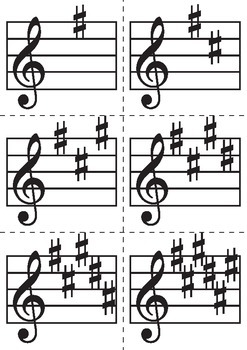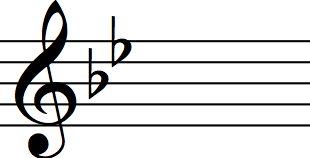
Try Handel’s Flute Sonatas or Scalatti’s keyboard music for plenty of scale based single note passages to help practice reading pitches in different keys. There is also a wealth of classical pieces out there, much of which is public domain. Recommended Reading: Joseph Alexander has written a brilliant book of reading exercises for Fundamental Changes. Look out for the accidentals in the music this time, and remember that in a flat key a ‘natural’ accidental, when applied to a note that is flattened by the key will have the effect of sharpening the pitch. You may like to play through the major scale first to familiarise yourself with the fingerings and the sound.

Before playing each example, identify the key signature by name and the notes which are to be altered. Similar to previous week’s examples, but now we are changing the key. Then, just as we did in C major, allow for any further accidentals that occur throughout the piece, while continuing to visualise the scale pattern of the given key on the fretboard. The most effective way to read in different key signatures is to play from the major scale of that key and so long as you are confident with the scale shape the accidentals should take care of themselves. This defines the fundamental characteristics of the music and provide a framework within which you can more easily decipher the notation. When first approaching a new piece of music, particularly if you are going to be expected to play it there and then, the first things you should quickly scan the page for are the key signature. Note how each key adds one accidental to the previous key. The number of accidentals in a key signature ranges from 0 to 7 C. A key signature has either sharps or flats, never both. The key signature comes between the clef and the time signature. It’s definitely worth memorising the sharps and flats included in each key. Definition of Key Signature: A key signature is a pattern of accidentals (sharps or flats) at the very beginning of a staff, which represents a song’s key. The following figure shows the key signatures of the most common key signatures, laid out in ascending sharps and flats.

The sequence of the keys is known as the cycle of fourths/fifths. Note also that although the key signature’s # is on the F on the top line of the stave, the rule applies to F’s in any octave. This means that every time you see an F in the notation, it is automatically played as an F#. Similarly, F major includes one flat (Bb) and is thus denoted by a flat on the middle line of the stave. So far we have kept within the key of C major (no sharps or flats), but all twelve keys available to us each have their own key signature which can appear at the start of the music.įor example, the key of G major (music built around the tonic centre of G, and the G major scale) contains one sharp, F#, so the key signature would be one sharp written after the treble clef at the beginning of the stave. Now that we’ve discussed reading pitches and rhythms in previous columns, as well as the use of accidentals to illustrate chromatic notes, we’re going to start changing the key signature of the music.


 0 kommentar(er)
0 kommentar(er)
